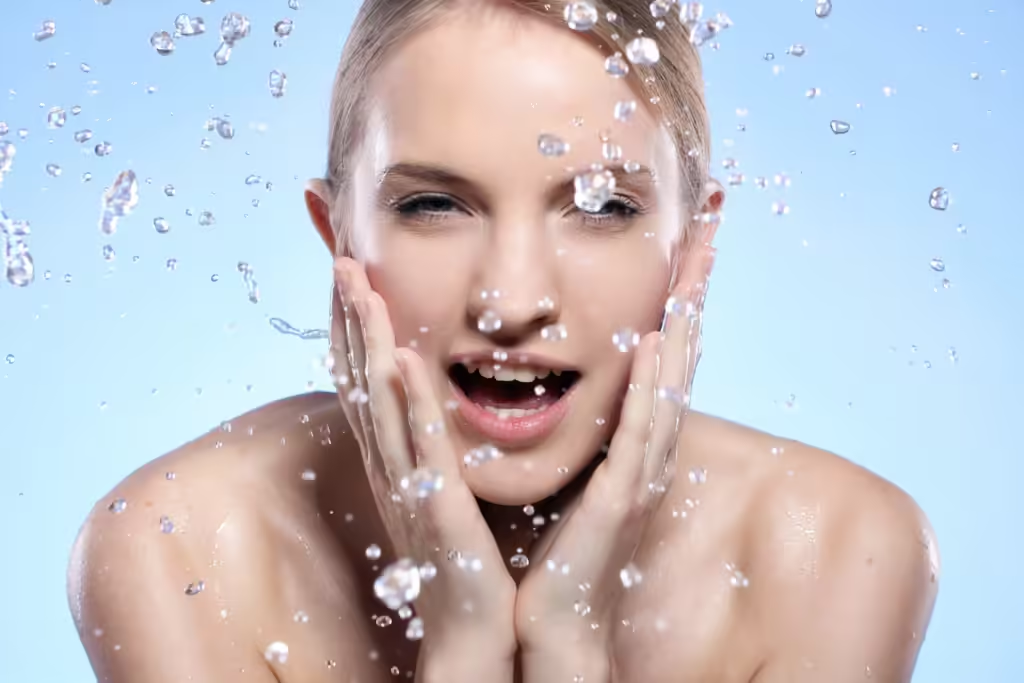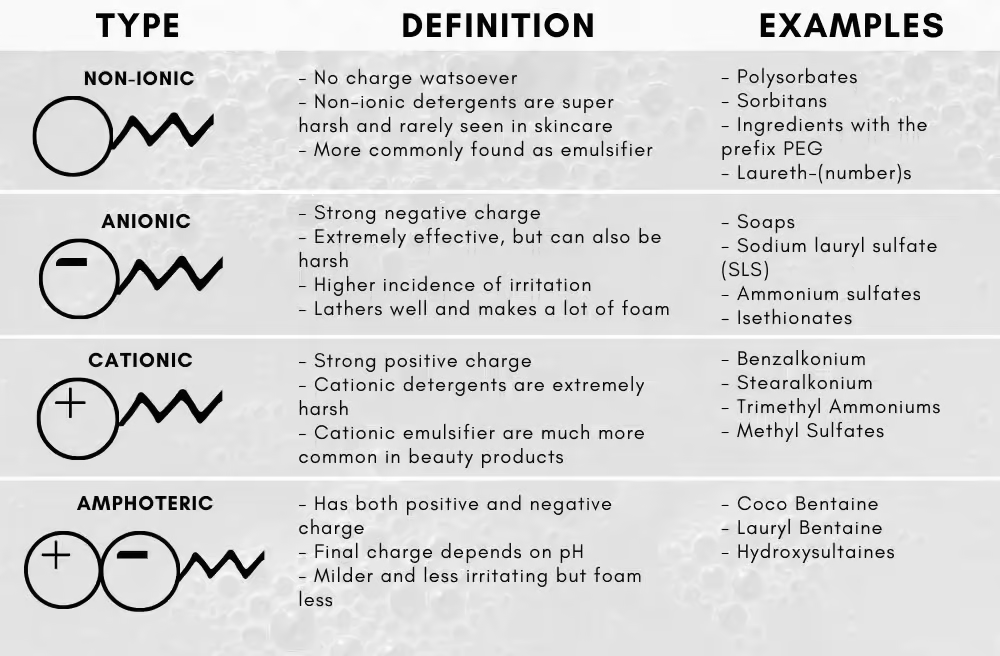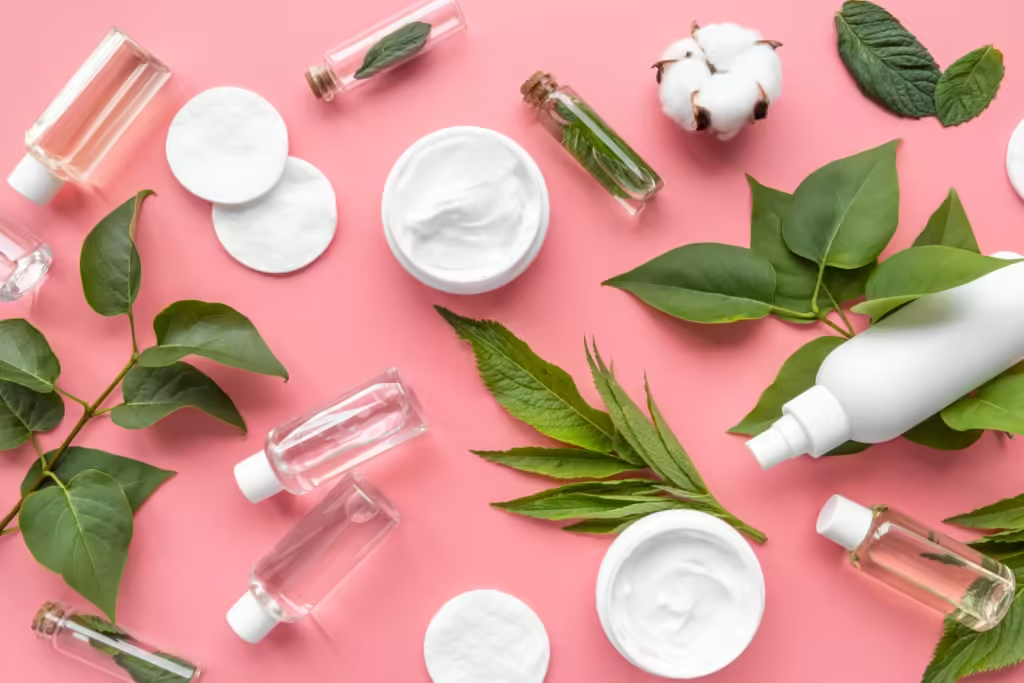
The Science Behind Facial Cleansers: Understanding Surfactants
Have you ever wondered how facial cleansers work to remove dirt, oil, and makeup from your skin? The answer lies in a special group of molecules called surfactants. These hardworking agents are crucial for effective cleansing and have a fascinating science behind them. Let’s dive into the world of surfactants and explore their types, benefits, and impact on skincare!

1. What Are Surfactants?
Surfactants, or surface-active agents, are molecules with a unique structure that allows them to reduce the surface tension between different substances. Each surfactant molecule has two main parts: a hydrophilic (water-loving) head and a hydrophobic (oil-loving) tail. This dual nature allows surfactants to mix water and oil, which is essential for cleansing. They enable water to grab onto oil and dirt on your skin, making it easy to wash everything away when you rinse.
Types of Surfactants and Their Roles
Not all surfactants are the same. There are four primary types, each with unique properties and effects on the skin. Let’s take a closer look:
- Anionic Surfactants
- Properties: These carry a negative charge and are known for their strong cleansing and foaming abilities.
- Common Uses: Found in many facial cleansers and shampoos due to their powerful cleaning action.
- Skin Impact: Can be drying and may strip away natural oils, making them less suitable for sensitive skin.
- Cationic Surfactants
- Properties: These have a positive charge and are often used in conditioning products.
- Common Uses: Typically found in conditioners and skin lotions to help smooth and soften.
- Skin Impact: While effective, they can cause irritation if not formulated carefully.
- Amphoteric Surfactants
- Properties: These can act as either positive or negative based on the pH, making them versatile and mild.
- Common Uses: Frequently used in baby products and sensitive skin formulations.
- Skin Impact: Gentle on the skin, ideal for those with sensitive or reactive skin.
- Non-Ionic Surfactants
- Properties: Carry no charge and are generally the mildest surfactants.
- Common Uses: Popular in products for dry or delicate skin.
- Skin Impact: Gentle and less likely to irritate, making them a top choice for facial cleansers aimed at hydration.

2. How Surfactants Affect the Skin Barrier
While surfactants are essential for cleansing, some types can damage the skin barrier, especially if they’re too harsh. When the barrier is disrupted, the skin may experience transepidermal water loss (TEWL), leading to dryness, irritation, and inflammation. Mild surfactants like non-ionic and amphoteric types are often used in skincare to minimize these effects while still providing effective cleansing.

3. The Eco-Friendly Evolution of Surfactants
As consumers grow more environmentally conscious, there’s a rising demand for eco-friendly surfactants. Traditional surfactants, like sodium lauryl sulfate (SLS), are effective but may not be biodegradable, potentially impacting ecosystems. In response, manufacturers are developing biodegradable and bio-based surfactants derived from natural sources such as plants or microbes. These new options offer a sustainable choice for those looking to reduce their environmental footprint while enjoying effective skincare.
Choosing the Right Cleanser for Your Skin Type
Understanding surfactants can help you pick a facial cleanser that suits your skin type:
- Oily or Acne-Prone Skin: Anionic surfactants may work well, as they provide deep cleansing. However, avoid overly harsh options that could lead to irritation.
- Dry or Sensitive Skin: Opt for cleansers with non-ionic or amphoteric surfactants, as they’re milder and help preserve the skin’s natural moisture barrier.
- Eco-Conscious Choices: Look for cleansers with bio-based or biodegradable surfactants to support sustainability.

Final Thoughts
Next time you cleanse your face, take a moment to appreciate the science behind the process. Surfactants are the unsung heroes that keep your skin fresh and clean, balancing efficacy with gentleness. With ongoing innovations in sustainable surfactants, we can look forward to cleansers that not only take care of our skin but also the environment.
So go ahead, enjoy your skincare routine, and rest easy knowing a little more about what’s making your skin glow! 🌟

© beautilab 2024. All Rights reserved.